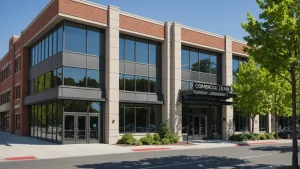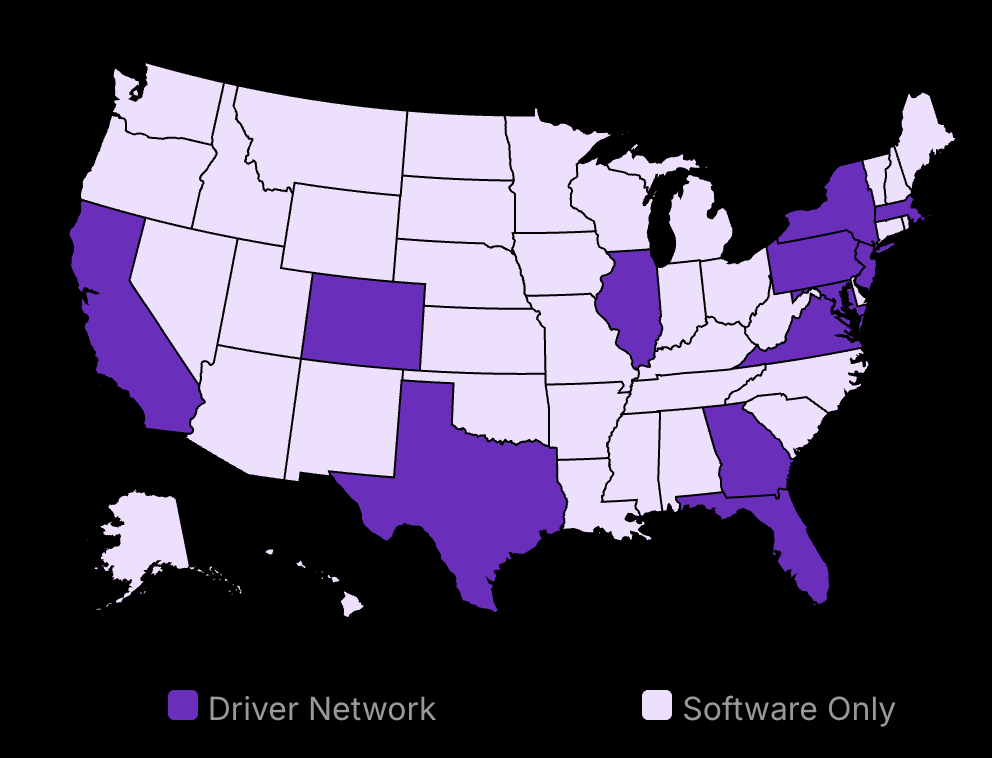A business owner walked out of a lease negotiation with $250,000 in savings over five years. His secret? He knew what questions to ask about CAM charges. The landlord wanted him to pay a 15% yearly increase. The business owner asked for proof of past maintenance costs. The numbers showed only a 3% average increase. He got the cap changed.
This is what happens when you know how to negotiate a Commercial Lease Agreement for your business. The details matter. A lot.
Commercial Lease Agreements are different from residential ones. Different rules. Different costs. Different expectations. One wrong move in your commercial lease agreement can cost you thousands of dollars each month.
The truth about commercial property lease negotiations? Commercial property owners need good tenants. The market has shifted. Vacancy rates in major cities are up. Smart business owners use this to their advantage. Understanding what constitutes a commercial lease is crucial for navigating these negotiations effectively. This knowledge enables business owners to evaluate their options better and make informed decisions that align with their financial goals.
In essence, becoming well-versed in the specifics of a commercial lease can empower tenants to negotiate with confidence and clarity. For more insightful information regarding commercial leases, consider exploring what constitutes a commercial lease and how it can affect your business decisions.
“The secret to successful negotiation is to know your bottom line, but also be flexible enough to make adjustments.” – Chris Voss
To further empower your lease negotiations, consider utilizing resources like a free Texas commercial lease agreement template. Such a template can provide you with insights into common clauses and standards, giving you a solid foundation on which to base your demands and expectations. Understanding these elements can be crucial in tailoring the lease to better suit your business needs.
This guide breaks down the exact steps to negotiate your commercial leases. You’ll learn:
- How to research market rates (and why most people look at the wrong numbers)
- The six lease terms that landlords rarely mention first
- Why timing your negotiation matters more than you think
- Which improvements you should never pay for yourself
Every successful business starts with smart decisions about location and costs. Your lease negotiation is your first chance to prove you’re a shrewd business operator. Let’s make it count.
Want to save money on your lease? Keep reading. The next few minutes could save you thousands of dollars per year.

Metrobi drivers are rated 4.97 out of 5
Trusted by local businesses for:
- Background-checked professionals
- Specialized in business deliveries
- Same drivers for consistency
- 4.97/5 average delivery rating
Step 1: Research and Analyze the Commercial Lease Market
-
Know the right areas for your business needs.
-
Compare market rates effectively.
-
Get insights to handle lease talks confidently.
Identify Potential Locations
Choosing the right location can make or break your business. You can start by listing areas that align with your business needs.
-
Preferred Areas: Focus on areas that cater to your customer base or are strategically positioned for your operations. For instance, tech startups might thrive in innovation hubs.
-
Competition and Customer Demographics: Look at what your competitors are doing in these areas and understand the local customer demographics. Knowing this helps to assess whether the market is saturated or if there’s room to grow. For example, a coffee shop in a residential area with busy morning commutes might do well.
Compare Market Rates and Offerings
Understanding lease pricing and incentives can give you an edge.
-
Average Lease Prices: Analyze lease price trends with the help of industry reports and real estate portals. Knowing average lease prices ensures your negotiations aren’t blindsided by overvaluation. For example, a retail space in a less-developed area might be priced differently than in a popular district.
-
Incentives and Concessions: Some landlords offer rent-free periods or reduced rates to attract long-term tenants. Keep an eye on these opportunities as they can significantly cut down your starting costs. This is common in newly developed commercial areas looking to draw tenants.
Assess Property Conditions and Amenities
After choosing locations and analyzing market rates, the next crucial step for commercial property owner is to assess the current state and offerings of potential properties.
-
Visit Properties: Personal visits allow you to verify conditions and amenities firsthand. Evaluate the structural integrity and look for signs of neglect that might incur future maintenance costs. For instance, a restaurant space without adequate kitchen facilities could lead to unforeseen expenses.
-
Suitability for Business Operations: Does the property layout support your operational needs? A warehouse needs accessible loading docks, while an office requires reliable internet infrastructure. Check if the amenities align with your business requirements, like parking space for a retail store.
Step 2: Understand Key Commercial Leases’ Terms
-
Know your base rent and possible hikes.
-
Clarify the length of the lease and renewal terms.
-
Determine who is responsible for improvement costs.
Navigating commercial leases requires a solid grasp of several key terms. Each of these terms can significantly impact the cost and flexibility of your commercial lease agreements. It is better to learn these terms to construct a commercial lease agreement that aligns with your business needs and budget.
Rent, Term, and Renewal Options
Rent
Rent is the primary cost consideration in any lease. You can begin by identifying the base rent amount and ensuring it aligns with current market rates to prevent overpayment. Base your rent negotiations on current data; for example, the office vacancy rate in November 2024 is 19.4%. This might give you leverage to negotiate lower rents due to supply exceeding demand. Present this data to the landlord to make a case for negotiating lower rents. Also, you should understand any rent increase clauses in the lease contract. These clauses outline how and when your monthly rent amount might go up. Ideally, aim to negotiate a cap on any annual increase to maintain predictability in your expenses going forward.
Lease Term
The lease term is the length of time you are locked into the commercial lease agreement. Businesses often prefer shorter lease terms for flexibility, while landlords might offer discounts on longer terms. Weigh these options based on your business strategy. If the neighborhood sees rapid changes, a shorter lease can provide an exit plan if the location does not meet expectations. Discuss potential extensions or early termination clauses, so you are not penalized should plans change. Draft these considerations into your lease to protect your business.
Renewal Options
Renewal options give tenants the right to extend their lease when it ends. These terms are crucial if the location is strategic. Ensure the renewal terms set forth the same rent increase caps you’ve managed to negotiate originally. This step secures a predictable cost structure for future planning. It also prevents the landlord from significantly hiking rent after your business settles into its office space and location.
Tenant Improvement Allowances
Often, leased spaces need adjustments to fit your operational needs. Tenant Improvement (TI) allowances are credits landlords give toward these renovations. Discuss the extent of the tenant modifications allowed with your landlord. The allowance amount varies based on lease agreement terms and overall rent agreed upon.
Determining the Scope
Clarify what improvements fall under the TI. Are structural changes included, or are they limited to aesthetic adjustments? You should define this scope thoroughly to avoid misunderstandings leading to unplanned expenses. Ensure the lease precisely mentions the kinds of improvements allowed. Specify how improvements are to be managed – whether you have a say in choosing contractors, for example.
Negotiating the Costs
Negotiate who will be responsible for the costs exceeding the TI allowance. Understand whether you will get a reimbursement if the total improvement expenses lie within the TI allowance. If your landlord expects you to cover additional costs, this should be balanced by greater initial improvements at their cost.
Understand Common Area Maintenance (CAM) Charges
CAM fees cover the cost of maintaining shared spaces, like lobbies, outside areas, and elevators. These charges are split among tenants and often fluctuate each year, impacting which tenant pays overall lease costs.
What CAM Charges Cover
You can start with your net lease and request a detailed explanation of what the CAM charges include. Maintenance, utility costs, property taxes, and insurance are common elements. Understanding this breakdown is crucial because non-standard charges can be challenged. Ensure your lease has clear definitions of what is and isn’t covered under CAM. It shields from unexpected costs arising later.
Negotiating Caps
Caps on CAM increases provide predictability in your budgeting. Attempt to fix an annual percentage cap, such as 3% to 5%, to prevent sharp increases. This capping benefits landlords by showing them as transparent and helps tenants by minimizing financial surprises. Present market trends when negotiating. How retail vacancy rates have lingered near 4% since 2022, suggesting steady demand that can impact these fees.
Step 3: Prepare for Commercial Lease Negotiation
-
Understand LOI fundamentals: Clarify intentions with the landlord.
-
Get legal advice: Ensure lease terms protect your interests.
-
Master communication: Negotiate effectively with landlords.
Draft a Letter of Intent (LOI)
Drafting a solid Letter of Intent (LOI) sets the groundwork for lease negotiations. This is where you outline your expectations. Commit to these steps for an impactful LOI.
Outline Key Terms of Lease Agreement
It is best to start by listing the main terms including rent, lease duration, security deposit, and notable conditions. Keep it concise but details matter. Your LOI should cover what you are offering and what you expect in return.
-
Rent: Specify your proposed rent amount. Base this on your analysis of comparable sites to support your offer.
-
Commercial Lease Agreement Duration: Identify your desired lease agreement term, whether it’s a flexible short-term or a more permanent long-term arrangement. Highlight the importance of flexibility through early termination clauses. The post-pandemic trend leans towards more flexible, shorter leases Commercial Leasing Post-Pandemic.
-
Additional Conditions: Clarify potential changes such as renovation plans. This avoids misunderstandings later.
Emphasize Flexibility
Flexibility is key in today’s market. If necessary, refer back to recent market trends to justify your proposed terms. Keep the tone positive to encourage favorable responses.
-
Suggest the possibility of including renewal options with capped rent increases.
-
Mention accommodation for any build-out costs through lease arrangements, which provides more security for your plans.
Engage with a Real Estate Attorney
Consulting a real estate attorney enables a thorough understanding of rental property lease legalities. Always have an attorney review commercial lease agreements before you commit.
Consult for Legal Guidance for Commercial Lease Agreement
An attorney will help interpret complex clauses within the commercial lease. This step ensures you aren’t taken by surprise.
-
Assess Clauses: Whether it’s Common Area Maintenance (CAM) charges or exclusivity rights, the legal jargon can hide unforeseen costs. Have your attorney assess these sections.
-
Evaluate Risk: Consider potential legal pitfalls. Seek advice on negotiation clauses like termination rights or dispute resolution procedures.
Review LOI and Commercial Lease Agreements
Before sending your LOI, a legal review helps catch incompatible or overreaching terms. Ensure your agreements capture all essential contingencies.
-
Align commercial lease agreements with your draft LOI terms.
-
The attorney should guide you on acceptable negotiation stances.
Communicate Effectively with the Landlord in Commercial Lease Agreement
Effective communication can make or break negotiations. Approach this with preparation and flexibility.
Present a Professional and Well-Researched Case
Compile a business proposal backed by facts and figures that make your case appealing.
-
Research and Present: Know your market comparables. Data platforms like CompStak can offer insights into average lease rates and terms of Lease Comps and Negotiation.
-
Prepare Alternatives: Show that you’ve considered other properties—keeping your options open strengthens your position.
Prepare for Counteroffers for Commercial Lease Agreement
Landlords will likely make counteroffers. Set your limits and strategies before discussions start.
-
Know Your Limits: Keep a firm understanding of your budget constraints. Decide beforehand which terms you can flex on and which you cannot.
-
Maintain Professionalism: Manage negotiations without emotional attachment to any single opportunity.
Negotiating a commercial lease demands preparation. Each step, from drafting the LOI to finalizing terms, involves strategic choices that secure your business’s future location and financial health. A successful negotiation is rooted in clarity, preparation, and the negotiation process itself.
The Importance Of Commercial Lease Agreements
Commercial lease negotiations shape your business’s future. With the knowledge you’ve gained, you’re ready to make smart choices about your business location and terms of gross lease. Remember that every part of the lease can be negotiated – from base rent to improvement allowances.
The best lease deals come from good preparation. You can start by studying the market rates in your area. You should get legal help to review the terms. Talk clearly with landlords about what you need. Most importantly, know your business numbers and stick to your budget limits. Understanding the differences between various types of leases can significantly impact your decision. Knowing about the nuances of a gross lease versus net lease can guide your negotiations and help you choose the option that best fits your business structure.
The lease you sign sets up your costs and business space for years. A well-negotiated lease can save you money and give you room to grow. A poor one can hold back your success. Take time to check every detail, and don’t rush because of pressure from landlords. If you’re exploring your options, understanding the different agreements available can be crucial. Check out these five key types of commercial leases that could impact your decision-making process.
Understanding the financing aspects of a commercial lease is equally important. For instance, knowing the commission structure for leasing can help you navigate costs effectively and ensure a fair agreement. This insight enables tenants to budget appropriately and avoid surprises during the negotiation process.
Before committing to any lease agreement, it’s vital to grasp the specifics hidden within. Understanding the nuances of a commercial lease can significantly influence your business’s financial stability and operational capacity.
Keep this guide as your reference when you start talks with property owners. You should update your knowledge as market conditions change. And always remember: a good deal means both you the landlord and tenant and the landlord benefit from the commercial lease agreement. Before you sign a lease, it’s critical to understand the finer details that can impact your financial commitment and operational success. For an in-depth overview of key aspects to consider, check out this informative post on what to focus on in a commercial lease.
Your next step is simple: you should make a list of what you need in a space, then start looking at properties. The perfect location industrial space for your business is out there – now you know how to get it at the right terms.






























